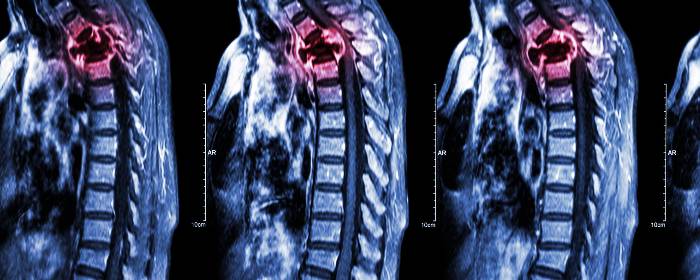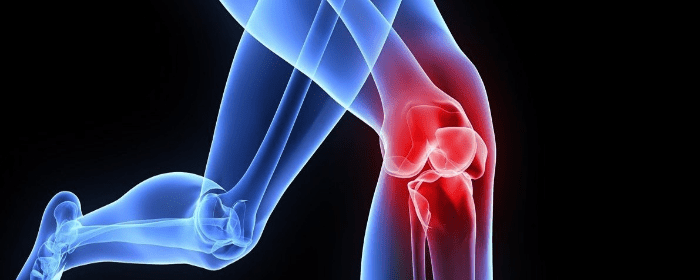
by admin | Feb 4, 2019 | Adipose, Mesenchymal Stem Cells, Stem Cell Research, Stem Cell Therapy
Spinal cord injury is severe neurological condition in which
the major mode of transmission between the brain and the body is disrupted.
When higher levels of the spinal cord are injured, for example, in the neck,
the injury can be immediately fatal. Those who survived spinal cord injury are
often left paralyzed and at risk for a number of comorbid conditions
such as pneumonia, depression, skin ulceration infection, urinary tract
infections, and pain.
If patients who sustain spinal cord injury can receive
medical treatment quickly, physicians may administer glucocorticoids to help
reduce swelling around the injury and preserve spinal cord function. Patients
may also undergo therapeutic
hypothermia (a.k.a. targeted temperature management, whole body cooling),
also to help reduce inflammation and prevent scar tissue from forming around
the damaged spinal cord.
After the first few days to weeks after spinal cord injury,
not much can be done to change the outcome of the disease. Patients may undergo
intensive physical, occupational, and speech therapy to help regain function,
but more often than not the neurological deficits are mostly permanent. Hence,
researchers are feverishly searching for ways to treat spinal cord injury and,
by extension, prevent or reduce paralysis and other chronic complications.
Mesenchymal stem cells are an intriguing potential therapy
for spinal cord injury. These cells can easily be obtained from many different
tissues including bone marrow and fat among others. In animals, mesenchymal stem
cells have been shown to improve changes that occur during spinal cord injury,
namely the regeneration
and strengthening of nerve cells in the spinal cord. Research
has also shown how adipose-derived stem cells are a potential option for those
with neurological conditions such as spinal cord injury.
To test this possible effect in humans, researchers collected
mesenchymal stromal (stem) cells from patients with spinal cord injury in
their upper back (i.e. thoracic spinal cord). Researchers then prepared and administered
those cells back into the cerebrospinal fluid of the same patients. Each
patient received two or three injections of approximately 1,000,000 cells per
kilogram body weight. There were no adverse effects of the treatment for up to
two years after injection. MRI imaging showed no abnormalities resulting from
stem cell infusion. While the authors write that there were too few patients to
make any firm conclusions about the efficacy of the treatment, they were
strongly encouraged by the safety of the procedure. In fact, they use these
results to begin a placebo-controlled clinical trial.
Reference
Satti et al. (2016). Autologous mesenchymal stromal cell
transplantation for spinal cord injury: A Phase I pilot study. International Society for Cellular Therapy,
18(4),518-522.

by admin | Dec 29, 2018 | Mesenchymal Stem Cells, Osteoarthritis, Stem Cell Therapy
Most large joints of the body contain cartilage, a substance that is softer and more flexible than bone. Because of its softness and flexibility, cartilage is well-suited to protect the bones as they move across one another. Unfortunately, this softness and flexibility also makes cartilage prone to injury and erosion. In patients with osteoarthritis, forexample, cartilage breaks down to the point that bone rubs against bone,causing pain and disability. Certain injuries can damage the cartilage (i.e.osteochondral lesion), which can essentially have the same effect.
Once the cartilage of joints has become damaged, there is
little that can be done to fix it. Patients may receive steroid injections into
the joint to reduce inflammation, and may rely on pain medications to relieve
the pain and swelling. Short of joint replacement therapy, no treatments can
reverse cartilage damage once it has occurred.
Fortunately, mesenchymal stem cells may soon be able to reverse cartilage defects that arise from osteochondral lesions and osteoarthritis. Wakitani and colleagues took samples of patients’ bone marrow, which contains mesenchymal stem cells. They then used various laboratory techniques to increase the number of stem cells in the sample. Four weekslater, the researchers then reinjected the concentrated stem cells back intothe same patient using their own source of stem cells. The Wakitani groupshowed that stem cell transplantation improved the patient’s clinical symptoms bysix months, a benefit that continued for two years on average. Samples takenfrom the patients 12 months later showed that the damaged cartilage had beenrepaired. In other work, Centeno and co-authors showed that bone marrow-derived mesenchymal stemcells could increase the volume of cartilage, reduce pain, and increase rangeof motion 24 weeks after stem cell transplantation.
Research continues to determine which stem cells are most useful, how many stem cells should be injected, how many injections need to be administered, and how should those stem cells be prepared before they are injected? Nonetheless, certain groups are making great strides in this area. In fact, the recent discovery of human skeletal stem cells promises to accelerate stem cell research into treating disorders of bone and cartilage.
Reference
Schmitt et al. (2012). Application of Stem Cells in Orthopedics. Stem Cells International. 2012: 394962

by admin | Dec 7, 2018 | Studies, Mesenchymal Stem Cells, Umbilical Stem Cell
Liver failure is a serious, potentially fatal condition in which large swaths of liver cells become dysfunctional and die. Liver failure is the result of several conditions including chronic alcohol consumption, exposure to drugs that are toxic to the liver (e.g. acetaminophen), autoimmune diseases, or infections such as hepatitis C. Liver failure causes several metabolic abnormalities including dangerously low levels of sodium, potassium, and phosphate in the blood. Moreover, four in 10 people with liver failure have trouble regulating their blood glucose levels, which can cause profound hypoglycemia. Since the liver detoxifies the blood, when the liver fails, patients can experience confusion from excessive amounts of ammonia and other substances in the blood. Seizures are also possible.
Short of liver transplantation, there are very few treatments for liver failure. Most treatments focus on restoring sodium, potassium, phosphate, and glucose levels in the blood, and bringing down ammonia levels. Fortunately, experiments show that human mesenchymal stem cells may be a promising treatment for liver failure.
Researchers enrolled 43 people with acute-on-chronic liver failure caused by hepatitis B infection. In this group, 24 patients were treated with mesenchymal stem cells derived from human umbilical cord and 19 patients received a saline solution. The groups received stem cells or placebo, respectively, three times every four weeks. Patients treated with mesenchymal stem cells showed better measures of liver function than those who received placebo. Livers of the patients treated with stem cells produced much more protein, albumin, and clotting factors, and were better able to process bilirubin. Importantly, no significant side effects were observed during the trial.
Given the serious nature of liver failure and the lack of effective treatments (besides liver transplant), this research is incredibly exciting. It offers hope that through further research scientists will be able to use mesenchymal stem cells to change the outcomes of people with acute-on-chronic liver failure.
Reference: https://stemcellsjournals.onlinelibrary.wiley.com/doi/abs/10.5966/sctm.2012-0034

by admin | Aug 31, 2018 | Stem Cell Research, Stem Cell Therapy, Studies
Crohn’s disease is a chronic inflammatory bowel disease that has no cure. It causes abdominal pain, frequent diarrhea, weight loss, fatigue, and anemia. While the disease can be controlled to some degree through oral and injectable medications, life-threatening complications may occur.
One of the feared complications of Crohn’s disease is called a bowel fistula. A fistula is an abnormal connection between two places on the body. In Crohn’s disease, a fistula forms between the intestine and some other structure—the intestine essentially forms a “tunnel.” The fistula can form between one loop of intestine and another, between intestine and bladder, or even between the intestine and the outside of the body. This complication of Crohn’s disease is obviously quite distressing to patients.
Some bowel fistulas may close on their own with conservative treatments, but fistulas associated with Crohn’s disease do not respond well to available medical treatments. Those looking for an alternative treatment may be able to consider stem cell therapy.
Stem cells offer an interesting potential solution to this problem. Stem cells can provide a large dose of normal cells filled with molecules that can help direct normal bowel growth and development. Indeed, researchers have shown that autologous mesenchymal stem cells can help close and heal fistulas in patients with Crohn’s disease.
In phase I, II, and IIB clinical trials, stem cells derived from adipose tissue or bone marrow were directly infused into the bowel area (via a so-called intra-fistular injection). Across five clinical studies including over 100 patients, stem cell administration resulted in complete fistula healing in 50 to 80% of patients treated. Of those who did not obtain complete control fistula closure, almost all had evidence of improvement. These results support that autologous mesenchymal stem cell therapy is a promising future treatment for patients with Crohn’s disease and may offer patients enjoy a better quality of life.

by admin | Aug 21, 2018 | Stem Cell Therapy, Wharton's Jelly
Mesenchymal stem cells have been showing promise in the treatment of a variety of diseases and injuries. These cells are derived from different tissue types, and it appears that where the stem cells come from is indicative of how they function and how appropriate they are for use in different applications. Bone marrow-derived mesenchymal stem cells have been deeply studied and are often considered a go-to for stem cell research and clinical use.
However, there are several limitations that bone marrow-derived mesenchymal stem cells pose, particularly from a practicality standpoint, and thus, researchers have begun to try to understand how other types of stem cells may achieve similar or better results than those from the bone marrow. A recent review, published in Act Histochemical, compiled comprehensive data on the biological properties associated with a specific type of mesenchymal stem cell called Wharton’s Jelly-derived mesenchymal stem cells.
These stem cells, which come from the umbilical cord, are able to differentiate into mature cells that make up several different types of tissues and can even turn into non-mesenchymal cells, such as neurons, or brain cells. They are useful in that they spontaneously move to sites of injury or inflammation and may, therefore, be able to help restore tissue and normal functioning. They are also unlikely to instigate adverse immune system reactions.
While it is advantageous that bone marrow-derived mesenchymal stem cells have been studied extensively and therefore are associated with broad knowledge of therapeutic applicability, the cells are difficult to isolate and use. In contract, cells from the umbilical cord matrix, or Wharton’s jelly, are easy to isolate and also appear to be good candidates for therapeutic intervention. Future research should therefore look more closely at how Wharton’s jelly-derived mesenchymal stem cells can be used to treat disease and injury. As noted by the authors of this review, there are specifically dysfunctions of the central and peripheral nervous system that these stem cells may be able to address.






 St. Petersburg, Florida
St. Petersburg, Florida
